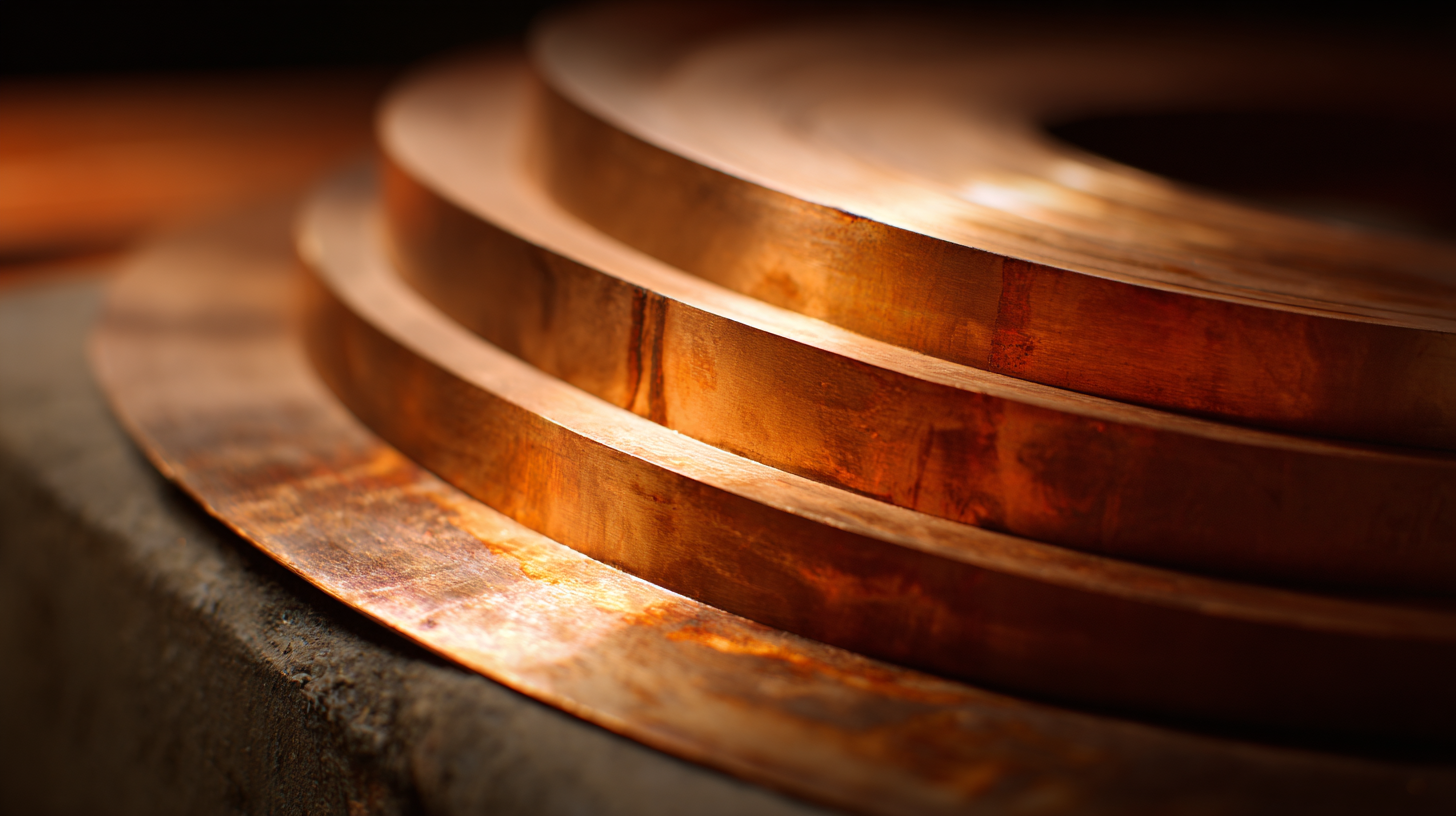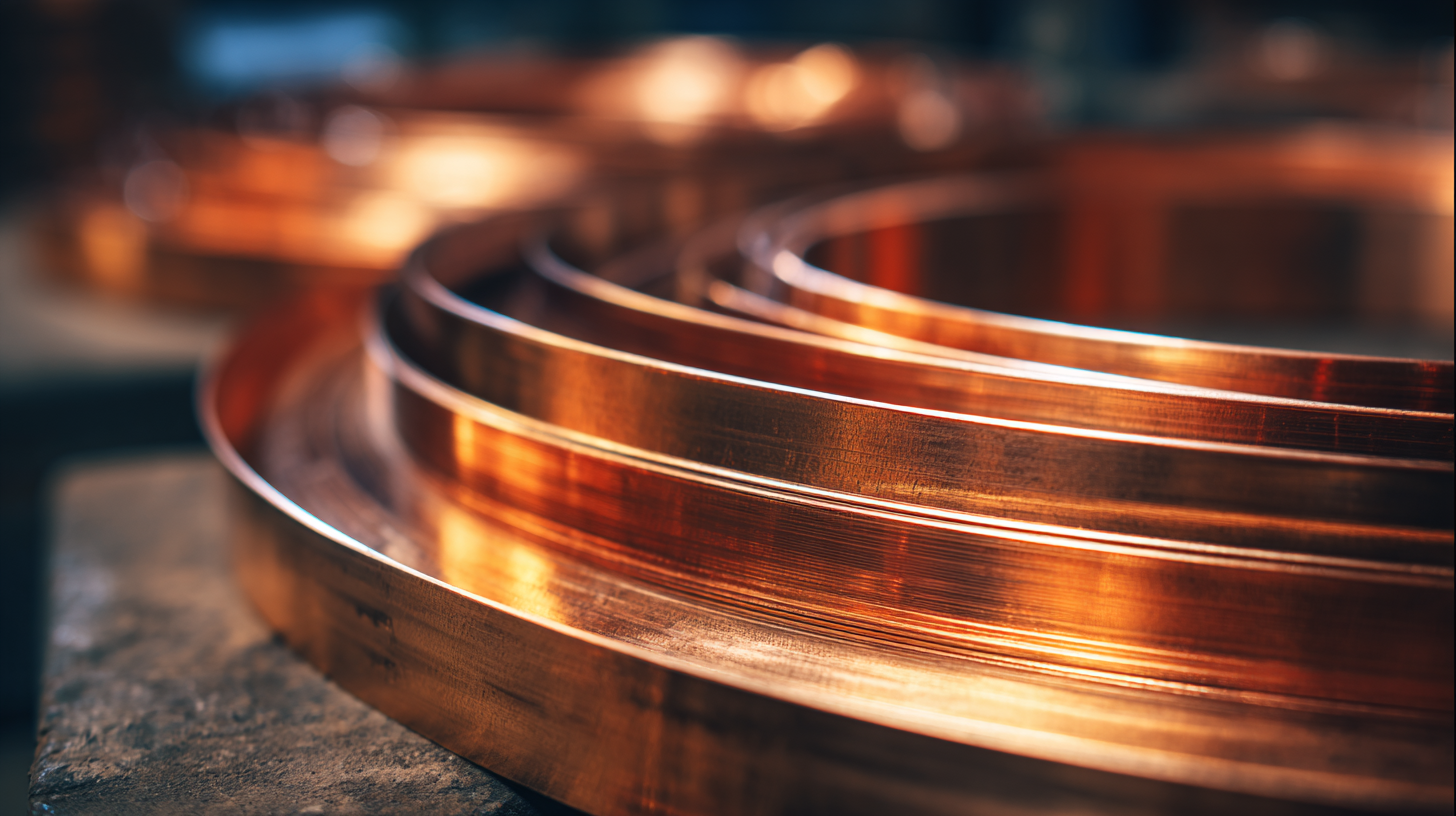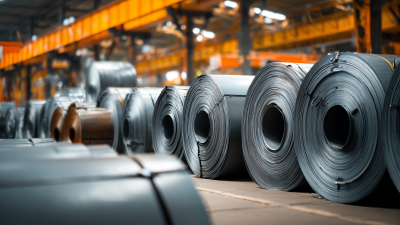The demand for copper strip products is on the rise, driven by their essential role in various industries, including electrical, automotive, and construction. According to a recent market analysis by Grand View Research, the global copper strip market is projected to reach USD 8.4 billion by 2025, growing at a compound annual growth rate (CAGR) of 4.2% from 2019 to 2025. This surge is attributed to the increasing utilization of copper in renewable energy applications, particularly in solar panels and electric vehicles, where conductivity and durability are paramount.

As emerging technologies continue to evolve, the significance of high-quality copper strip products becomes even more pronounced. In particular, products that meet specific industry standards not only enhance the performance and longevity of electrical components but also contribute to energy efficiency. With the push toward sustainable manufacturing practices, innovations in copper strip production techniques are paving the way for improved material properties and environmental friendliness. Through careful selection of the right copper strip products, businesses can ensure that their projects are not only efficient but also aligned with modern sustainability goals, making it critical for stakeholders to stay informed about the top offerings in the market for 2025.
When planning projects for 2025, understanding the top copper strip products available and their unique industry benefits is crucial. Copper strips, known for their excellent conductivity and malleability, have become essential in various applications such as electrical wiring, electronic components, and renewable energy systems. According to the Global Copper Market Report (2023), the demand for copper is projected to grow at a CAGR of 4.3% through 2025, driven by the rising need for sustainable energy solutions and advancements in electrical engineering.

Among the leading copper strip products to consider are high-purity copper strips, which offer superior electrical conductivity, often exceeding 101% IACS (International Annealed Copper Standard). This characteristic is vital for reducing energy losses in power transmission systems. Additionally, the introduction of eco-friendly copper alloys is shaping the market, providing enhanced strength and corrosion resistance while promoting sustainable practices in manufacturing. Reports from the International Copper Association indicate that utilizing recycled copper can reduce emissions by up to 85%, representing a significant environmental advantage for modern projects.
Copper strips are essential components in electrical applications due to their unique properties. One of the most significant advantages of copper is its excellent electrical conductivity, which allows for the efficient transmission of electricity with minimal energy loss. This property makes copper strips a preferred choice for manufacturing electrical contacts, connectors, and busbars, where reliable performance is crucial. Additionally, copper’s ability to withstand high temperatures without losing its conductive properties further enhances its reliability in various applications.
Another key attribute of copper strips is their corrosion resistance. When properly treated, copper can resist oxidation and other forms of corrosion, ensuring longer lifespan and reduced maintenance costs in electrical systems. This durability makes copper strips suitable for both indoor and outdoor applications, including power generation and distribution infrastructure. Furthermore, the malleability of copper allows it to be easily shaped into strips of varying thicknesses, providing engineers with the versatility needed for custom project specifications. These unique properties position copper strips as an indispensable material in modern electrical engineering projects.
As the renewable energy sector continues to expand, the demand for copper strip products is surging. This rise is driven by the increasing utilization of copper in various applications such as solar panels, wind turbines, and energy storage solutions. Copper's excellent electrical conductivity, durability, and resistance to corrosion make it an essential material for enhancing the efficiency and lifespan of renewable energy technologies.
When planning projects that incorporate copper strip products, consider these tips: first, assess the specific requirements for conductivity and durability in your application. Opting for high-quality copper strips can significantly affect overall performance. Second, staying updated on market trends is crucial, as innovations in renewable technologies can shift your needs. Finally, establish a reliable supply chain with manufacturers who focus on sustainability, ensuring that your projects align with the eco-friendly ethos of the renewable energy sector.
Overall, understanding the growth in copper strip consumption will allow you to leverage its benefits in your renewable energy projects effectively. Keeping these insights in mind will position your ventures for success in an increasingly green marketplace.
The copper industry is undergoing a transformative shift towards sustainability, particularly in the production of copper strips. A recent report by the International Copper Association highlights that over 50% of copper production now incorporates eco-friendly practices, which not only minimize waste but also significantly reduce carbon emissions. By utilizing renewable energy sources and implementing closed-loop manufacturing processes, companies can produce high-quality copper strips while ensuring that their environmental footprint is minimized.

Additionally, innovations in recycling technologies have contributed to the sustainability of copper strip production. According to a study by the Global Copper Alliance, recycled copper uses 85% less energy compared to primary production. This shift not only reduces the demand for new raw materials but also supports a circular economy, which is crucial in addressing the growing environmental challenges. As a result, projects that utilize sustainable copper strip products are not only financially viable but also align with the increasing consumer demand for eco-conscious choices in construction and manufacturing.
When selecting copper strip alloys for high-performance applications, it is essential to understand the distinct properties and advantages each alloy offers. Copper strips are commonly used in fields such as electronics, renewable energy, and automotive industries due to their excellent conductivity and mechanical properties. Various alloys exhibit unique characteristics that cater to specific project requirements. For instance, C11000 offers high electrical conductivity, making it ideal for electrical contacts and connectors. In contrast, C17200, known for its increased strength, is often preferred in applications requiring high durability.
Additionally, evaluating the corrosion resistance of copper strip alloys is crucial for projects exposed to harsh environments. Alloys like C19400 possess enhanced corrosion resistance due to their alloying elements, making them suitable for marine and chemical environments. The ability to withstand thermal cycling and mechanical stress is another key factor, particularly in demanding applications. By comparing these attributes, engineers and designers can make informed choices, ensuring optimal performance and longevity in their projects while maximizing material efficiency.









